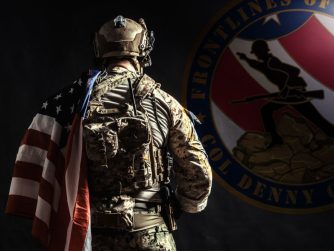There are 99 points that cover the most important events in World War II. This is well done historical material. Here are the first 25:
1. WWII was the most destructive conflict in history. It cost more money, damaged more property, killed more people, and caused more far-reaching changes than any other war in history.
2. The country with the largest number of WWII causalities was Russia , with over 21 million.
3. For every 5 German soldiers who died in WWII, 4 of them died on the Eastern Front.
4. It is estimated that 1.5 million children died during the Holocaust. Approximately 1.2 million of them were Jewish and tens of thousands were Gypsies.
5. Eighty percent of Soviet males born in 1923 didn’t survive WWII.
6. Between 1939 and 1945, the Allies dropped 3.4 million tons of bombs, which averaged to 27,700 tons per month.
7. Russia and the Red Army were accused of several war crimes, including systematic mass rape (over 2 million German women aged 13-70 were allegedly raped by the Red Army) and genocide.
8. Many historians believe that the Battle at Stalingrad (1942-1943) is not only arguably the bloodiest battle in history (800,000-1,600,000 casualties), but also the turning point of WWII in Europe .
9. Even after the Allies arrived, many concentration camp prisoners were beyond help. In Bergen-Belsen, for example, 13,000 prisoners died after liberation. Nearly 2,500 of the 33,000 survivors of Dachau died within 6 weeks of liberation.
10. Max Heiliger was the fictitious name the SS used to establish a bank account in which they deposited money, gold, and jewels taken from European Jews.
11. The longest battle of WWII was the Battle of the Atlantic, which lasted from 1939-1945.
12. The original abbreviation of the National Socialist Party was Nasos. The word “Nazi” derives from a Bavarian word that means “simple minded” and was first used as a term of derision by journalist Konrad Heiden (1901-1966).
13. The swastika is an ancient religious symbol. It derives from the Sanskrit name for a hooked cross, which was used by ancient civilizations as a symbol of fertility and good fortune. It has been found in the ruins of Greece , Egypt , China, India, & Hindu temples.
14. In 1935, British engineer Robert Watson-Watt was working on a “death ray” that would destroy enemy aircraft using radio waves. His “death ray” instead evolved into radar-or “radio detection and ranging.”
15. Out of the 40,000 men who served on U-boats during WWII, only 10,000 returned.
16. Survivors of both atomic bombings in Japan are called niju hibakusha, which literally means “explosion-affected people.”
17. Approximately 600,000 Jews served in the US armed forces during WWII. More than 35,000 were killed, wounded, captured, or missing. Approximately 8,000 died in combat. However, only 2 Jewish soldiers were awarded the Medal of Honor in WWII.
18. The Battle of the Bulge is the largest and deadliest battle for US troops to date, with more than 80,000 American deaths.
19. The Enola Gay became well known for dropping the first atomic bomb on Hiroshima , but few people know the name of the B-29 that bombed Nagasaki . It was “Bocks Car”, named after the plane’s usual commander, Frederick Bock.
20. More Russians (military and civilians) lost their lives during the Siege of Leningrad than did American and British soldiers combined in all of WWII.
21. The Nazis murdered approximately 12 million people, nearly 6 million of those being Jews killed in the Holocaust.
22. During WWII, the Japanese launched 9,000 “wind ship weapons” of paper and rubberized-silk balloons that carried incendiary and anti-personnel bombs toward the US. Over 1,000 balloons hit their targets; they reached as far east as Michigan . The only deaths resulting from a balloon bomb were 6 Americans (including 5 children and a pregnant woman) on a picnic in Oregon .
23. The Japanese Kamikaze (“divine wind”) tactic was suggested on October 19, 1944, by Vice-Admiral Onishi in an attempt to balance the technological advantage of invading American forces. Though the numbers are disputed, approximately 2,800 kamikaze pilots died. They sunk 34 US ships, damaged 368, killed 4,900 sailors, and wounded 4,800.
24. Many Jews were subject to gruesome medical experiments. For example, doctors would bombard the testicles of men and the ovaries of women with X-rays to see the impact of different doses on sterility. Nazi doctors would break bones repeatedly to see how many times it could be done before a bone could not heal. They hit people’s heads with hammers to see what their skulls could withstand. Experiments were conducted to determine the effects of atmospheric pressure on the body. Prisoners were injected with different drugs and diseases, and limbs were amputated and muscles cut for transplantation experiments. Today reference to or use of the Nazi research is considered unethical.
25. Dr. Josef Mengele (the “Angel of Death”) used about 3,000 twins, mostly Romany and Jewish children, for his painful genetic experiments. Only about 200 survived. His experiments included taking one twin’s eyeball and attaching it on the back of the other twin’s head or changing the eye color of children by injecting dye. In one instance, 2 Romany twins were sewn together in an attempt to create conjoined twins.



